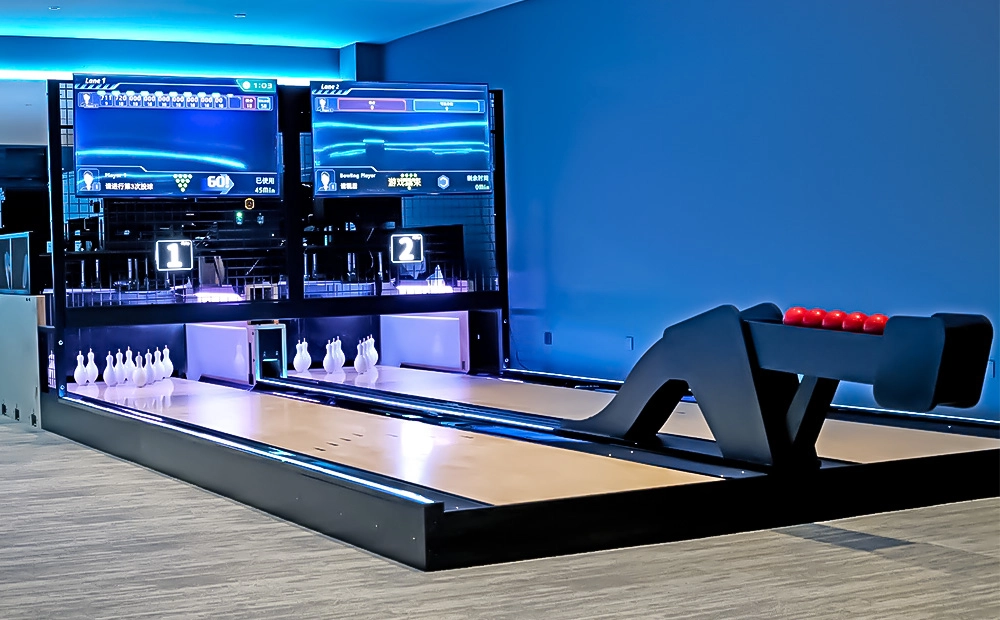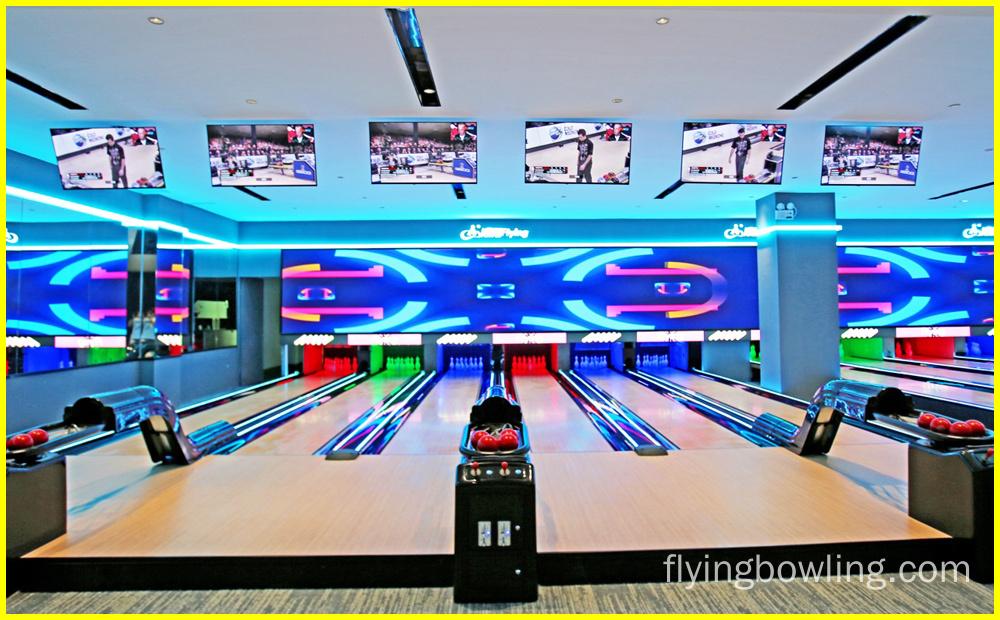The Complete Guide to Mini Bowling Alley Dimensions
- Mini Bowling Alley Dimensions: A Complete Guide
- 1. Understanding Mini Bowling Alley Dimensions
- 2. Lane Length and Width
- 3. Ball Specifications
- 4. Pin Placement and Spacing
- 5. Approach Area and Seating
- 6. Lighting and Decor
- 7. Company Spotlight: Flying Technology
- 8. Conclusion
- Mini Bowling Alley Dimensions FAQs:
Mini Bowling Alley Dimensions: A Complete Guide
As the trend of mini bowling continues to grow, many businesses are looking to set up their own mini bowling alleys. However, one of the key factors in creating a successful mini bowling experience is understanding the dimensions required for a proper setup. In this comprehensive guide, we will explore everything you need to know about mini bowling alley dimensions, including lane size, ball specifications, and more.
1. Understanding Mini Bowling Alley Dimensions
- In this section, we will provide an overview of the key dimensions involved in setting up a mini bowling alley, including the overall space requirements and considerations for lane positioning.
2. Lane Length and Width
- Explore the ideal dimensions for a mini bowling lane, including recommended length and width specifications, to ensure a smooth and enjoyable bowling experience for players.
3. Ball Specifications
Discover the optimal ball specifications for mini bowling, including weight and size requirements, to ensure compatibility with the lane dimensions and player comfort.
4. Pin Placement and Spacing
- Learn about the placement and spacing of pins in a mini bowling alley, including the required distance between pins and considerations for optimal pin placement.
5. Approach Area and Seating
- Explore the dimensions and layout of the approach area, as well as seating considerations for players and spectators in a mini bowling environment.
6. Lighting and Decor
- Understand the importance of lighting and decor in creating an inviting and immersive mini bowling experience, including considerations for optimal lighting and thematic elements.
7. Company Spotlight: Flying Technology
- Learn about Flying Technology's expertise in string pin bowling and their commitment to technological innovation, quality, and service in the digital sport franchise industry.
8. Conclusion
- Summarize the key takeaways of mini bowling alley dimensions and emphasize the importance of careful planning and attention to detail in creating a successful mini bowling setup.
Mini Bowling Alley Dimensions FAQs:
1. What are the standard dimensions for a mini bowling lane?
- Answer: The standard dimensions for a mini bowling lane typically range from XX feet in length to XX feet in width.
2. What is the recommended ball weight for mini bowling?
- Answer: The recommended ball weight for mini bowling is typically around X pounds to ensure compatibility with the lane dimensions.
3. How should pins be spaced in a mini bowling alley?
- Answer: Pins in a mini bowling alley should be spaced approximately XX inches apart for optimal gameplay.
4. What are the lighting considerations for a mini bowling setup?
- Answer: Lighting should be carefully planned to ensure adequate illumination of the lane and a visually appealing ambiance for players and spectators.
By following the information provided in this guide, businesses and entrepreneurs can ensure that their mini bowling alley dimensions are well-suited for an exceptional bowling experience, ultimately contributing to the success of their venture.
Recommended products

Flying Smart Duckpin Bowling

Flying Ultra Standard Bowling String Pinsetter

Brand New String Pinsetter Mini Bowling Equipment Small Ball And Pin

Complete Set Of String Pinsetter Bowling Lane Equipment

Indoor Medium Duckpin Bowling Lane Equipment For Bowling Alley
Bowling Equipment
How much does bowling alley equipment cost?
Building a bowling alley may seem very expensive to many people. But you don’t need to spend too much money on Flying bowling. Our prices are very affordable. You can get high-quality bowling equipment at an extremely competitive price from us.
Where to find bowling equipment?
You can search for Guangzhou Flying Bowling Co., Ltd. on Alibaba International Station and Google, and you can see different types of high-quality bowling equipment on our website. All bowling equipment-related information can be found on the website. If you have any questions, you can contact us at anytime.
How many feet is a bowling lane?
We have a total of four different sizes of bowling lanes. The length of a standard bowling lane is 84 feet. The length of Duckpin Bowling Lane is 39.4 feet. The Mini Bowling Lane size is 39.7 feet. The size of the children's bowling lanes is 14.1 feet. In addition, the length of our standard bowling lanes and duckpin bowling lanes can be customized.
Price
How much does it cost to build a 2 lane home bowling alley?
Building a 2-lane bowling alley in your home can be a fun and luxurious addition, but it comes with a significant cost. Here's a breakdown of what to expect:
Price range: Expect a ballpark figure of $120,000 to $195,000 [US dollars] for two lanes of traditional ten-pin bowling. This includes lane equipment, installation, and basic functionality for a home setting.
Variations: This cost can be highly influenced by your desired features and customizations. Here are some factors that can push the price higher:
Upgraded equipment: Automatic scoring systems, lane lighting systems, or high-performance lane surfaces will all add to the cost.
Construction considerations: The cost of preparing the space in your home might vary depending on the existing structures, plumbing, and electrical work needed.
Cost to setup a 8 lane bowling business?
This includes bowling lanes, bowling balls, pins, scoring systems, ball return systems, shoes, and other necessary equipment. Purchasing or leasing high-quality equipment is essential for a successful operation.
The total cost can vary greatly depending on factors such as location, size, quality, and additional amenities (such as a restaurant or arcade). On average, setting up an 8-lane bowling business can cost anywhere from several hundred thousand to over a million dollars. It's essential to conduct thorough research and create a detailed business plan to accurately estimate the specific costs of your venture.
Consulting with Flying Bowling experts can provide valuable insights into potential expenses.
You may also like

Flying Smart Duckpin Bowling (FSDB) innovative design, standard 9.2-meter short lane, can be shortened in length, compact layout suitable for small spaces. The game rules are simple but challenging, attracting players of different ages to actively participate.
Suitable for social entertainment venues such as bars, billiard halls, and game centers, it not only enhances interactivity but also increases the popularity and consumption frequency of the venue. The fun and competitive nature of FSDB will make it a new focus of social activities.

Flying Classic Standard Bowling (FCSB) is designed according to international competition standards and equipped with an accurate automatic scoring system, providing bowling enthusiasts with a pure professional experience. Whether it is for competitions or leisure entertainment, FCSB can meet high-level needs.
Suitable for family entertainment centers, luxury resorts, private villas, or clubs, it is an ideal choice for customers who pursue high-end quality and professional experience. Its classic design and excellent performance will add lasting appeal to the venue.

Flying Cute Mini Bowling (FCMB) is a mini bowling experience designed for children and families. The lane length is fixed at 12 meters, equipped with lightweight balls without finger holes (only 1.25kg) and small pins, specially designed for children and family fun.
It can not only help children feel the fun of bowling, but also stimulate their interest and competitive consciousness. Suitable for children's playgrounds, theme parks and parent-child centers, it is the best choice for places focusing on the children's market.

Flying Social Medium Bowling (FSMB) is tailored for small venues, with flexible lane lengths (customizable from 9.6 meters to 18 meters), a small ball design suitable for players of all ages, and light pins that are easier to knock down, increasing participation and fun.
Whether it is a gathering of friends or a casual social, FSMB can easily create a relaxed and pleasant atmosphere. Its efficient space-utilization design is particularly suitable for cafes, bars and community entertainment venues, allowing people to fall in love with bowling in a relaxed interaction.
Contact Flying
Start your bowling alley project
If you contact us now for more details, we can provide you with a custom bowling alley service. Our service team will get back to you within 24 hours normally!
© 2025 Flying BOWLING. Designed by gooeyun.
FOLLOW US:




Flying Bowling
Flying Bowling
Flyingbowling
Flyingbowling